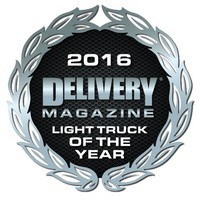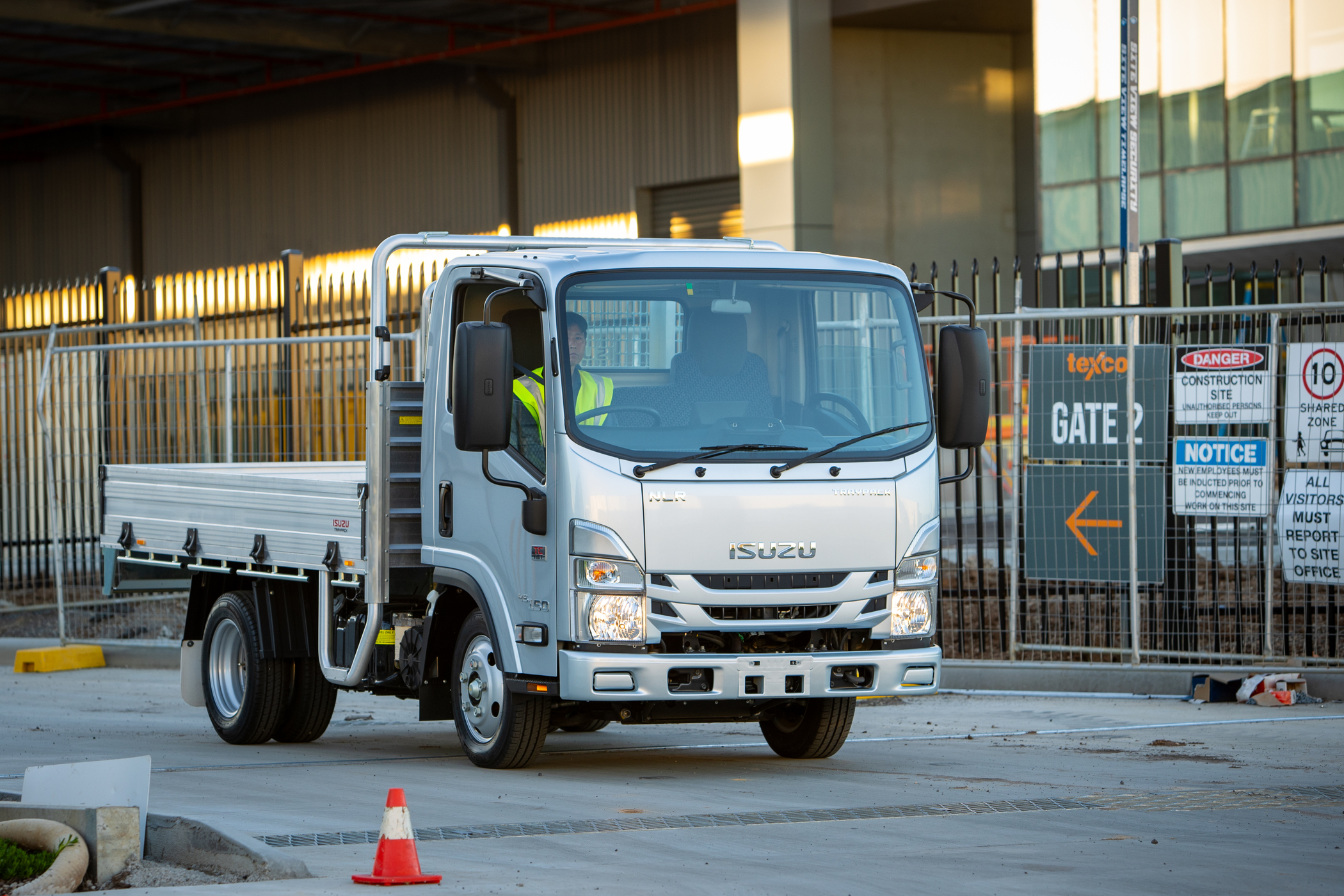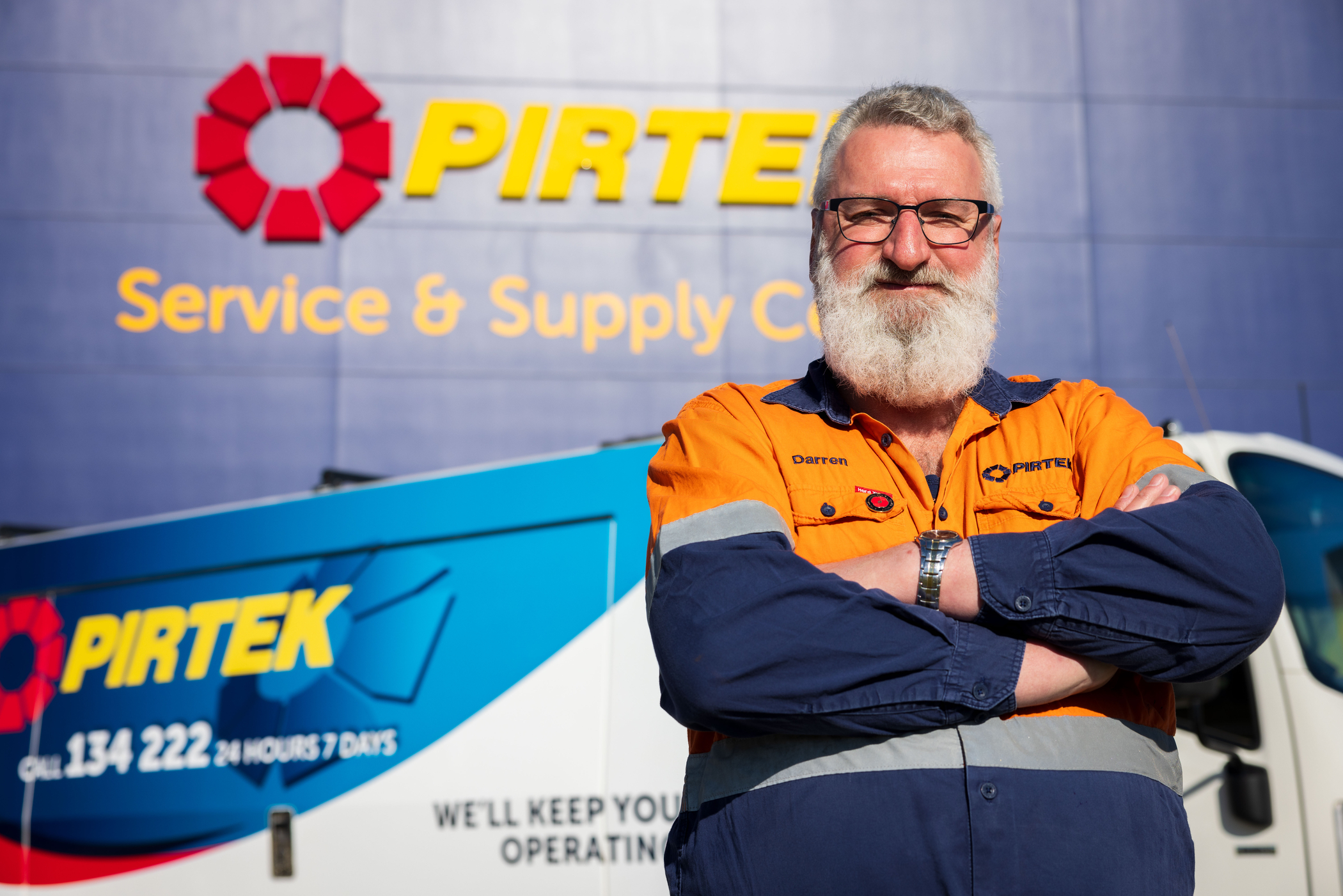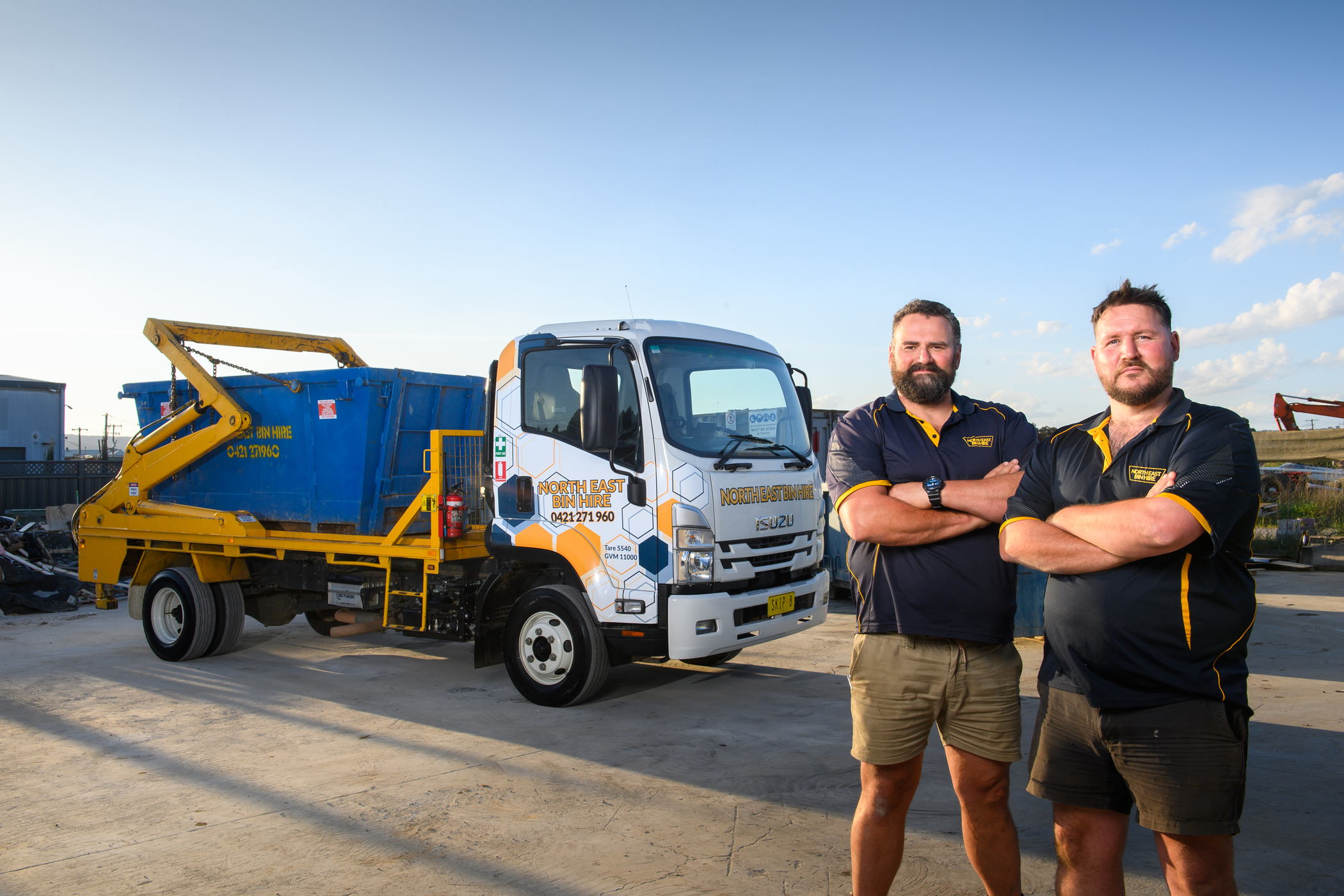THE LIGHT FANTASTIC
Jun 01, 2016
•
0min read
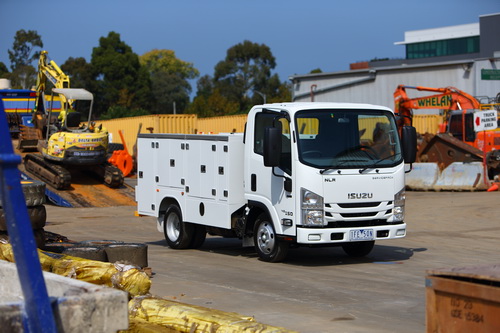
[image_gallery][/image_gallery]
Chris Mullet
Delivery
June 2016
When you mix European and Japanese competitors, there’s plenty of room for discussion.
If you thought the decision-making on utes, vans and people movers could bring forth a high degree of conversation on which is the better vehicle, then the quest to find the best light truck should keep you more than enthralled.
For starters, we’re comparing highly sophisticated European light trucks that feature standard safety items from passenger-car model ranges to carry volume loading, with Japanese cabovers that in some cases combine hybrid drives to cater for the more aggressive and higher weight payload requirements.
I’ll start on safe ground with the Isuzu NLR Servicepack.
The pre-fitment of work specific bodies is not new, with drop-side bodies and ladder racks, factory-bodied tippers and now hooklifts, all available off the dealer forecourt.
Isuzu has signed off on a great package that hits right at the high volume sales area of utes and tradies. In place of buying a ute, adding a heavy-duty body, then finding it necessary to upgrade suspension systems, here’s a readymade solution.
It can carry 1.5 tonnes, tow 2.5 tonnes, store any amount of gear in side lockers and carry cargo up the centre part of the tray. It spins around in a circle in much less that a ute can match at 8.9 metres (kerb to kerb) and it fits into underground carparks and domestic garages.
With independent front suspension, disc brakes all round, the choice of a five-speed manual or six-speed
AMT, it comes in a package that is priced around the $60,000 mark, similar to that of an upmarket 4x4 ute.
At Delivery, we see this as a game changer for the tradies that try to adapt a ute to become a Jack-of-alltrades, but, of course, it is limited in appeal if you want to go shopping with the family on the weekend.
The hybrid light-truck option was represented by Hino and Fuso, where both brands were able to show how electrically-assisted diesel engines can improve performance in hilly areas while reducing fuel consumption.
Neither models require the driver to act in any different way; the vehicles themselves sort out the driveline mixing and recharge the batteries when travelling downhill or when braking.
The Hino entrants included a 716 Hybrid ProShift 5 with a TradeAce body, and this was joined by a Hino 616 IFS Short Manual with a WorkAce body. Hino No. 3 was a 921 Auto with a TradeAce body.
The 716 Hybrid features a five-speed AMT with idle stop/start, regenerative braking, ABS, vehicle stability control, hill start assist, dual SRS airbags and four-wheel disc brakes.
The standard GVM rating is 6500 kg with a GCM of 10,000 kg, but it can be downrated for car licence drivers to 4495 kg. Maximum power of 110 kW comes with peak torque of 420 Nm for the Hybrid and Auto, but climbs to 121 kW and 464 Nm in manual form.
It’s easy to drive, and out of the hybrid versions it’s the easiest to work out when assistance is provided by the electric motor while the batteries are being regenerated. If there’s an Achilles heel in this model it’s the use of a solid I-beam for the front suspension when IFS with coil sprung front ends are available in other models at the lighter end of the weight spectrum. The ride and handling from an IFS design is so far ahead of an I-beam with leaf springs.
The Hino 616 IFS short manual can be configured with or without hybrid drive and can be rated for a GVM of 5500 kg or downrated to 4495 kg. It’s available with a five-speed manual or five-speed Pro Shift auto, plus the additional option of a six-speed full auto with double overdrive. Again featuring disc brakes all round, dual SRS airbags and ABS with vehicle stability control, this model comes with an IFS front end and vastly superior ride and handling when compared to the 716, although power and torque outputs are identical.
The 921 Auto standard GVM is 8500 kg, but again can be downrated to 4495 kg, effectively making a mockery out of the current vehicle registration regulations. With 151 kW produced at 2600 rpm, but with 600 Nm of torque at 1500 rpm and with a six-speed fully fluid automatic transmission with double overdrive, the performance outclassed every other Japanese cabover, even though the cab interior didn’t manage to be class leading when compared to the Isuzu alternatives.
From the Isuzu camp came the aforementioned NLR 45-150 Servicepack with independent front suspension, supported by the arrival of a NPR 45-155 SWB Premium Tradepack.
With a version of the trusty and dependable 3.0-litre found in the D-Max, power for the NLR 45-150 comes in at 110 kW with peak torque of 375 Nm at 1600-2800 rpm. Stability control, ABS, ASR (anti-skid regulation), EBD (electronic brake force distribution) and a GVM of 4495 kg, the evaluation model was fitted with the six-speed AMT that works very well, especially around the inner city. In summing up, it’s a proper little truck with a 24-volt electrical system. There’s been a lot of thought gone into the addition of the service body, even down to the onebutton key remote locking and unlocking of the cab doors and compartment lockers.
suzu’s NPR 45-155 SWB Premium Tradepack features all the safety inclusions of the NLR but adds cornering lights and a driver suspension seat. Rated at 5500 kg GVM (downscaled to 4495 kg as an option), power from the 5.2-litre four-cylinder diesel comes in at 114 kW at 2600 rpm and with peak torque of 419 Nm rated from 1600 to 2600 rpm. The Premium Pack adds cruise control, silver metallic paint, a lockable underslung storage box and a 23-litre water tank and soap dispenser.
For the suspension design, it’s back to solid I-beam front end and leaf-sprung rear, but disc brakes are common to all wheels. On the highway it’s noticeably slower than the corresponding Hino 921 Auto, but the cab is more modern with a better interior.
Fuso entered two versions of the Canter, the first being the 515 wide-cab MWB with a standard driveline, and the second being the 815 Eco Hybrid version, both being fitted with Pantech bodies and featuring the Duonic twin-clutch automated manual transmission.
Both are powered by a 3.0-litre producing 110 kW and 370 Nm, and the judges found that clutch engagement from start-off was unpredictable on the 515, especially in reverse, but smoothed out by the electric motor intervention at start-up in the Eco Hybrid. None of the judges were keen on the twin-clutch AMT, and, a much better solution, in these times of global integration, would be for Fuso to borrow the 7G-Tronic full-fluid automatic that features in the Mercedes-Benz Sprinter range.
IVECO showed the strength of its product portfolio with a Daily 50C cab/chassis factory-fitted three-way tipper. Power comes from a 3.0-litre diesel from Fiat Powertrain that is mated to the ZF Hi-Matic eight-speed automatic transmission.
The rear suspension is on leaf springs and it sported a differential lock, electronic stability programme, driver and passenger airbags and a multimedia system with GPS. The estimated on-road price was $64,000.
Mercedes-Benz entered its Sprinter 516 LWB cab/chassis with power from the 2.2-litre, four-cylinder diesel and rated at 4.49 tonnes for car licence holders. With a power output of 120 kW and torque rating of 360 Nm, this model featured a six-speed manual transmission.
Safety features included an adaptive electronic stability rogramme, cruise control with Speedtronic, daytime running lamps, heated electric mirrors and dual front airbags, and came in with a price structure of $69,966.
The French connection in the light truck segment was served by the Renault Master light truck cab/chassis complete with factory tray and an estimated on road price of $56,780.
Backed by a three-year/200,000 km warranty, and with three years roadside assist and capped price servicing, Renault is trying hard to win new customers. The Master cab/chassis is rear-wheel-drive with a six-speed manual or AMT and comes with stability control, ABS and dual airbags.
Available as a single-cab or dual-cab, power from the 2.3-litre diesel comes in at 120 kW at 3500 rpm and with peak torque of 360 Nm at 1500 rpm.
And now to the views of the judges.
FLEET THOUGHTS
TERRY BICKERTON, NATIONAL FLEET MANAGER, AUS POST
“It amazes me that some makers are still using globes, which really are 150-year-old technology. With LED technology now so far advanced and so cheap, all manufacturers should get onboard. With globe technology, a truck can be grounded for 30 minutes or so while is blown globe is replaced. You don’t get that with LED technology. Even if one tiny LED goes, the truck is still roadworthy.
“These are things that manufacturers miss, and I’ll be looking for them, plus making other observations, while I drive Delivery’s test route. I’m also looking for whether the makers are providing Bluetooth or cruise control – if they’re not, they should be.
These are little, easy, low-cost fixes that would make their trucks more attractive to drivers and fleet operators alike.
“The Fuso Hybrid rides better than the Hino. The cab’s okay although there’s no cruise control, no electric mirrors, or other creature comforts you might expect to find.
“Both the Fuso and Hino Hybrids are a bit underpowered, but it’s a much better programme in the Hino than in the Fuso, so it can make up its mind. One criticism of it, though, is that it wants to hold top gear too long, searching for better fuel economy and then it hasn’t got enough puff to recover.
“It’s better than the Fuso Hybrid in terms of features, but it’s not a quantum leap from it.
“The Hino 921 Auto’s got a really good drivetrain and it has 60 horsepower more than the Fuso, and it goes a lot better. It has a fluid transmission and drives like a car. The drivetrain is good but the ride is really choppy, to the point where the vehicle switched on both stability control and the traction control simultaneously after hitting the big mid-corner bump at Cordeaux Creek.
“When I get into a light truck, I look for the available adjustments and whether it will be comfortable for an operator to drive when they’re doing 100-150 drops a day, and get in and out of all day, every day.
“My first impression of driving the Isuzu NLR Servicepack is that there are no steering-wheel-mounted controls. That’s not ideal, because to locate just about anything, I have to take one hand off the wheel momentarily, and my eyes off the road. The cab is relatively narrow too. The NLR transmission can lag in gear changing in my opinion, although it is one of the better automated-manuals in this category.
“The Servicepack is designed primarily for field-service contracts within earthmoving and utilities industries, where something like this is mostly driven on secondary roads and forestry roads. Ride quality, for someone who is going to be driving on secondary and forestry roads for 10 or 12 hours a day, is especially important when it comes to combating fatigue and encouraging safe driving.
“The little Isuzu’s drivetrain is okay. The engine’s willing. And, even though I’m not a fan of automated manuals, I have to admit that this one’s probably the best of the bunch, although its mapping is suspect. The brakes are strong, too, although they lack a bit of feel; it’s either all or nothing.
"For me, it's the Sprinter. It's the best light-truck out there," said Terry.
FLEET INSIGHTS
KURT GROSSREIDER DRIVES THE CONTENDERS AND FINDS RENEWED RESPECT FOR AN OLD FAVORITE
“Light commercials are part of the lifeblood of our business, and the Delivery Magazine showdown is a great way to sample a lot of the newer ones back to back. I’ve been looking forward to driving a couple of the ones the manufacturers obviously want to showcase here.
“Most of these trucks deliver a harsh ride over the Delivery test loop because that’s the nature of the roads involved. Some of these roads are rougher in parts than light-truck drivers are probably used to. About 80 percent of our light trucks are based in capital cities, so they don’t get out on the open road a lot. Still, there will be times when they’ll have to drive trucks like these on similar roads to make deliveries, so these conditions are valid.
“Highlights for me included Isuzu’s NPR Tradepack, which I believe has the best automated-manual transmission in the class. The cabin feels fairly modern, and the dashboard-mounted screen is a good size and makes a good first impression when you climb into the driver’s seat.
“The suspension seat works well, and, as drivers who use them will know, it’s better than when seatbelts are bolted to the B-pillar, as the belt can gradually tighten as you bounce up and down.
“The NPR’s big side mirrors have a habit of dragging down on the window frames when you drive on country roads, causing them to flex. You can experience a lot of wind noise, and actually get rain coming in through the gaps that open up. So that’s a negative.
“However, I like the way the NPR feels on the road and the directness of the steering. The ride’s fairly rough, but it’s rough in all of them in this category.
“Gear changes are smooth, and the truck generally does everything it should. It’s a nice transmission and shifts when it needs to. The truck gets along Delivery’s test loop quite nicely. Its ride can be a little harsh, but I think any truck in this category can be that way. The cabin is roomy, and instruments and controls are laid-out well.
“For me, the NPR’s appeal isn’t dissimilar to the Hyundai iLoad’s – it just does everything well. It doesn’t do anything outstanding, but it doesn’t do anything it shouldn’t do.
“The independent front-suspension NLR Servicepack handles how you’d expect it to. It’s almost car-like. I like the steering and the way it handles. It corners well, too. Like the Tradepack, the Servicepack’s side mirrors also can flex the window frames on the open road.
“The Fuso Hybrid’s steering felt a bit vague over the test loop. Its AMT works well enough in the lower speeds, but the relationship between fifth and six gears is extremely poor. It will kick down early, then rev its head off, but not upshift until really late. From a driver’s point of view, that change is not nice at all.
“Inside, it’s comfortable enough and all controls are all where they should be.
“The steering in the other Fuso here, the 515 IFS (independent front suspension), feels more car-like, and the truck handles nicely. It even held the line through the worst mid-corner bump on the assessment route, which is really saying something.
“But its AMT is the same as the one in the Hybrid, which means the relationship between fifth and sixth gears is just frustrating. I did drive it in manual and found that when it shifts down to fifth, if you slide it back into manual, crank it right up to sixth and leave it in manual, it’ll hold it. But you shouldn’t have to do that. Drivers generally want to slot it into auto and forget about it.
“The Hinos have plenty of power, but their ride’s harsh and they’re noisy. My only reservation about making a definitive judgment about their performance on Delivery’s test loop is that at least one of them wasn’t loaded well, with a bulker bag right behind the cab and nothing really over the back axle.
“My choice in the light truck range is the Isuzu NPR 45-150. Isuzu has been market leader for 27 years now, and they do everything very well. The NPR is no exception. The driveline and its AMT are best in class, although a full-fluid auto would be a nice addition for city distribution work,” said Kurt.
FINAL THOUGHTS
CHRIS MULLET ROUNDS UP THE COMPETITION
It’s an interesting result when each judge basically goes for a different result, but it indicates that in the
light-truck market it’s more a case of the right spec for a particular task making a particular vehicle fit for purpose.
Isuzu has spent its 27 years of consecutive market leadership continually refining its product range and filling in the blank spaces for operators that require something more specific. Isuzu knows its strengths and it constantly reconfigures its range to remove its weaknesses.
Hino has really moved forwards over recent years, and, with the Toyota machine behind the scenes dictating production quality and inbuilt safety features, there’s still more to be done with hybrid drive ahead of the company.
Fuso still needs to share more technology from its Mercedes-Benz relative than to dwell in the past with its links to Mitsubishi, and it will move forwards faster and with greater success.
Renault is very aggressive when it comes to vehicle pricing, and it’s starting to reap the benefits of this groundwork by increasing sales. The Europeans are now turning their attention to overseas markets, and we can be sure that Australia will see more models from different manufacturers heading here in the future as the world from a marketing perspective continues to shrink.
IVECO has the inner strength of having access to excellent engines from Fiat Powertrain and matching them to transmissions such as the eight-speed ZF automatic.
Where it seems to miss the target is with its suspension calibration, which, on evaluation, reinforces the need for this Italian manufacturer to indulge in local suspension refinement and not to just rely on what Italy considers will do the job.
On the subject of automated manual transmissions, there can be a tendency to ignore driving pleasure in order to introduce specific technology such as a dual clutch and other automated manual transmissions.
An AMT such as the Eaton Ultra-Shift Plus, ZF-AS Tronic, Volvo I-Shift or Mack mDrive works brilliantly in the heavy truck sector. But, despite being cheaper to manufacturer than a full-fluid automatic, at lighter weights and with higher revving engines they don’t work nearly as well as the truck manufacturer might hope.
Mercedes-Benz and IVECO have figured it out that no light-commercial-based AMT is as good as a tried and tested full-fluid automatic. The changes are swifter and smoother, and in shifting ratios there’s minimal interruption to vehicle momentum, with consequent advantages to fuel economy.
In casting a final vote, we recognise the safety advantages of Mercedes-Benz with the Sprinter, the efficient and effective drivetrain of IVECO, the fit-for-purpose aspect of Fuso, Hino and Isuzu, all of whom were represented in the final phases of the Delivery Magazine quest for the light truck of the year.
For being able to combine car-like safety features with a new approach to practical application, the winner of the Best Light Truck for 2016 goes to Isuzu for its innovative NLR 45-150 Servicepack.
www.deliverymagazine.com.au
